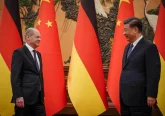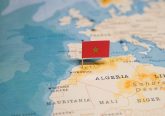 At the 2005 UN World Summit, more than 170 Heads of State and Government accepted three interlinked responsibilities, which together constitute the principle of ‘responsibility to protect’ (R2P). First, States accepted the responsibility to protect their own populations from genocide, war crimes, ethnic cleansing and crimes against humanity. Second, States promised to assist each other in fulfilling their domestic protection responsibilities. And third, the international community took on a collective responsibility to react, in a timely and decisive manner, if particular States are manifestly failing to protect their populations from the abovementioned mass atrocity crimes.
At the 2005 UN World Summit, more than 170 Heads of State and Government accepted three interlinked responsibilities, which together constitute the principle of ‘responsibility to protect’ (R2P). First, States accepted the responsibility to protect their own populations from genocide, war crimes, ethnic cleansing and crimes against humanity. Second, States promised to assist each other in fulfilling their domestic protection responsibilities. And third, the international community took on a collective responsibility to react, in a timely and decisive manner, if particular States are manifestly failing to protect their populations from the abovementioned mass atrocity crimes.
Despite a quite remarkable normative development (see for example the frequent invocation of R2P in relation to the recent Libya crisis), this R2P principle is still sometimes accused of being a “Western” doctrine and neo-colonialism and neo-imperialism in disguise. This critique has been repeatedly articulated by some states in international policy debates (e.g. Nicaragua, Venezuela, Cuba, Syria, Iran, or North Korea), and also by some Western intellectuals and scholars (e.g. Noam Chomsky or David Chandler). However, rather than simply accepting the opinion of states and critical Western scholars as the point of reference, the edited book Responsibility to Protect: Cultural Perspectives in the Global South by Rama Mani and Tom Weiss addresses the important and so far under-researched question of what scholars and activists from the global south really think about the R2P principle and how the R2P implementation process can account for those southern concerns and insights. The overarching question of the book therefore is: “Does the R2P norm as well as its founding values and practical applications, have resonance and grounding within diverse cultures and within societies that have been torn apart by mass atrocity crimes?”
The book examines this question in two ways. First, it provides three chapters on alternative approaches to R2P, namely religion, philosophy, and art; with a particular focus on southern versions of those three disciplines. Second, the book contains three case studies – on Rwanda, Kosovo and Nepal – written and researched by scholars from those countries (and with first-hand experience of mass atrocities). This methodology seems very much in line with the overall purpose to listen to what authors from the global south have to say about the topic of R2P and to “help shape the future implementation of R2P in accordance with insights from vastly different contexts”. Giving scholars from the global south a voice in the R2P debate is a remarkable and important achievement in and of itself.
The conceptual chapters then show that many values and ideas that are usually associated with R2P can be found within the religious and philosophical discourse in the global south. The chapter on religion argues, for example, that the cosmopolitan principles of common origin of humanity, equality of human beings, and universal solidarity can be found in all religious traditions. Also, most religions argue that sovereigns (and citizens) have certain responsibilities that they must live up to, or otherwise they lose authority. This is a clear echo of the “sovereignty as responsibility” doctrine that underpins R2P. In the chapter on philosophy it is stressed that philosophy can be used as a political tool against oppression, e.g. liberation philosophy. In short, the conceptual chapters emphasise that ideas of sovereign responsibilities, protection against life integrity violations, and resistance to oppression are well reflected in southern cultural traditions.
Moreover, the essays put forward some interesting ideas with regards to the prevention of mass atrocity crimes, which is now widely seen as the key constitutive element of R2P. Some chapters argue for a widening of the preventive scope of R2P, also tackling more structural and long-term notions of “veiled mass atrocities” and “cultural ethnocide”. Such an approach is in line with those voices that argue for a more long-term and root-cause focused approach towards R2P prevention. Interestingly, though, it seems to be contrary to the editors understanding of the ‘responsibility to prevent’, who argue that R2P’s focus in on “acute events and not on chronic conditions or root causes … Advocates are not hoping to stop the 75 smouldering conflicts that the International Crisis Group is monitoring this month that could turn deadly; they are not trying to establish peace on earth; and they are not attempting to rid the planet of all human rights abuses. Proponents are, after all, speaking of eliminating mass atrocities as public policy options” (225-226). In another section, Mani and Weiss explain that “the responsibility to protect is not about the protection of everyone from everything. Broadening perspectives away from reaction has opened the floodgates to an overflow of appeals to address too many problems. For example, part of the political support at the World Summit reflected an understandable but erroneous desire to use R2P to mobilize more support for root-cause prevention, including investments in economic and social development … if R2P means everything , it amounts to nothing” (4). The book thus highlights the two ways in which prevention can be approached, namely in terms of structural prevention and in terms of direct prevention (this is not to say that those two are incompatible, more often than not both form part of a more comprehensive prevention strategy). The recommendation that flows from the book (at least from the chapters), however, is to strengthen the structural components of mass atrocity prevention.
Finally, and a little bit more critically, the book deals with some broad concepts, such as the global south, culture, religion, philosophy, ethics, and art. Those concepts are anything but monolithic. It seems to me that it is almost impossible to extract one coherent position from the fields of religion or philosophy. Equally, it seems to be difficult to capture the one perspective from Rwanda, or Kosovo, or Nepal. Giving some scholars from the global south the opportunity to articulate their opinions on R2P is crucially important, but inevitably other voices with different opinions are still excluded from the discourse. Thus, the book provides some cultural impressions from the global south, but not a comprehensive account in any meaningful way. Thus, I think one should be careful not to claim too much. Much more research needs to be done to more accurately reflect southern perspectives in the R2P debate. However, Rama Mani and Tom Weiss (and those that contributed essays to the book) deserve praise for having kicked off the debate on this important topic.
Ruben Reike is a DPhil Candidate in International Relations at Somerville College, Oxford.








1 Comment
Thank you for the analysis, Reuben. I agree that it is necessary to turn the analysis to cultures and societies in the so-called ‘global south’ to determine if the principles of R2P are compatible. But having established that many cultures around the world believe in somewhat similar principles of social responsibility and protection against life integrity (as this book seems to have done), there remains the issue of application. It seems to me that this is precisely why those scholars – Chomsky, David Harvey, Samir Amin, etc. – who have called such interventions imperialist or neo-imperialist have done so so convincingly. When one assesses, for example (as you mention), the case of Libya, it would seem that intervention in this case was conducted primarily because it suited the interests of NATO and the global imperial superstructure (see Harvey et al). Herein lies the imperial nature of such interventions for ‘protection’: in Bahrain, direct repression of the people continued (with British-trained Saudi Arabian troops deployed to suppress the popular uprising, see Jamie Howard’s article in The Guardian ) and in Libya a NATO-led ‘no fly zone’ allowed Western powers to get a foothold on the revolution and therefore influence its direction (John Rees and Joseph Daher have written at length on this). So, might it be that the philosophies behind R2P are all well and good but its selective implementation (one based on the economic and political needs of those in power) indicates that it has been a tool of Empire?